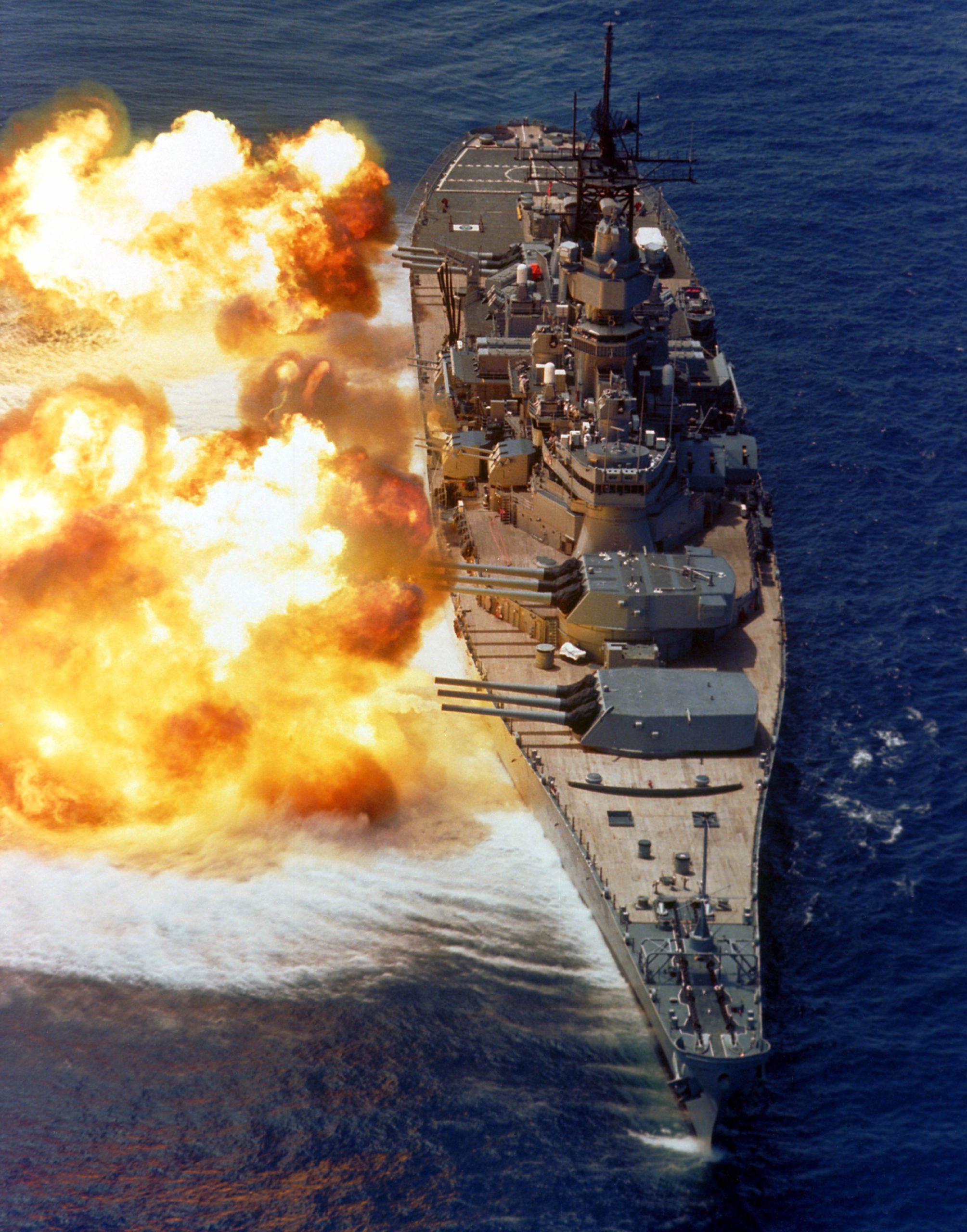by John Konrad (gCaptain) In a new study titled Navy Lasers, Railgun, and Gun-Launched Guided Projectiles the US Congress reports the two most important limitations that Navy surface ships currently face defending themselves against UAVs and anti-ship missiles are limited depth of magazine and unfavorable cost exchange ratios. Traslated this means that fighting swarm drone attacks would require lots more ammunition which requires lots more money and space aboard ship.
Limited depth of magazine refers to the fact that Navy surface ships can use surface-to-air missiles (SAMs) and Close-in Weapon System (CIWS) Gatling guns to shoot down only a certain number of enemy UAVs and anti-ship missiles before running out of SAMs and CIWS ammunition — a situation (which naval officers call “going Winchester”) that can require a ship to withdraw from battle, spend time travelling to a safe reloading location (which can be hundreds of miles away) to rendezvous with a Military Sealift Command ammunition ship.
Without more space to carry a lot more ammunition Navy surface ships in combat against adversaries such as China, that are armed with large numbers of UAVs and anti-ship missiles may “not be able to adequately defend themselves”.
In addition to requiring more space, modern ship defense systems are very expensive. Procurement costs for Navy air-defense missiles range from several hundred thousand dollars to a few million dollars per missile, depending on the type. In combat scenarios against an adversary with a limited number of UAVs or anti-ship missiles, high ammunition costs can be acceptable because it saves the lives of Navy sailors and prevents very damage to Navy ships but, in a drone swarm attack, even the US Navy’s extraordinarily deep pockets might not be deep enough to protect it’s own ships.
Alternatives To Ammunition
According to the report one solution is high energy defense weapons which don’t require ammunition, such as solid state lasers (SSLs).
Congress reports that substantial progress has been made toward deploying high-energy lasers for jamming or confusing (i.e., “dazzling”) small boats and UAVs, and potentially in the future for countering enemy anti-ship missiles as well. High-energy SSLs on Navy ships would generally be short-range defensive weapons – they would generally counter targets at ranges of about one mile to, perhaps eventually, a few miles.
The problem with high energy weapons, however, is again space aboard ship. High energy weapons require a lot of electricity which means bigger engines, much larger fuel tanks, and lots of batteries.
“It’s not enough. Even if you take all the other elements of a laser weapon and develop them to be perfect,” said Frank Peterkin, a senior scientist at the Office of Naval Research. “We still don’t have enough power.”
The Return Of Battleships?
While commercial ships have grown significantly larger in recent years, naval ships have remained relatively small. Even Americas new Ford class supercarriers are a couple hundred feet shorter than new containerships like the Ever Ace.
One solution not mentioned in the report is the return of battleships. These ships fell out of favor during World War two but they were built with heavy armor to take multiple blows and lots of room for ammunition, fuel, batteries, and massive generators.
“In this sense, the ‘battleship’ could return, although it will play a role more like a classic monitor (intended to fight against shore-based systems) than a line-of-battle-ship,” says Dr. Robert Farley, author of The Battleship Book. “And these new ‘battleships’ may survive because of their ability to absorb hits but the biggest reason to build big ships is the promise of electricity generation. The most interesting innovations in naval technology involve sensors, unmanned technology, lasers, and railguns, most of which are power intensive.”
Full Report Link: Navy Lasers, Railgun, and Gun-Launched Guided Projectile: Background and Issues for Congress
Tags:

 Join The Club
Join The Club











